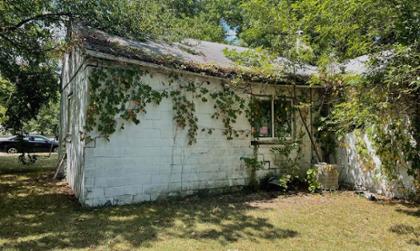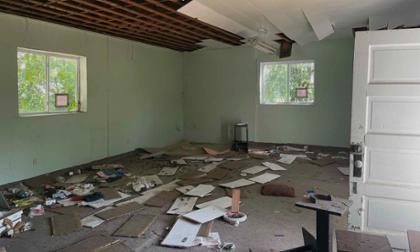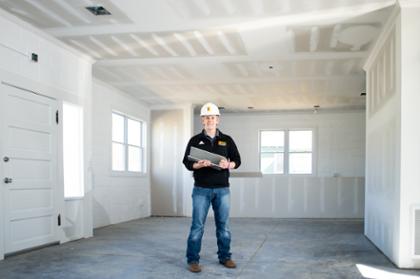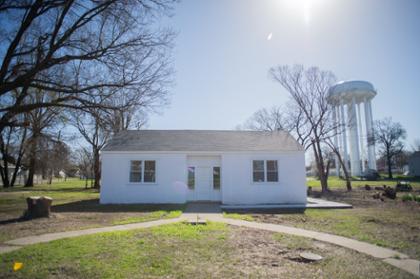With help from PSU's Office of Student Diversity, an open house is planned from noon to 2 p.m. on Saturday, June 18, the day before the federal Juneteenth holiday commemorating the emancipation of enslaved African Americans. A short program will be held from 1 to 2 p.m.
In 1951, the Carver League — named after the great educator, innovator, and botanist George Washington Carver — purchased a plot of land just north of the campus and began construction of the Carver League Building.
The purpose: to provide a place for social activities for Black students and Black residents who were denied membership in many community groups and organizations.
It was there, at 1007 S. Elm, that they held picnics, game nights, hot dog roasts, lectures, and movie screenings. They also participated in charity work.
“We called it the Kool-Aid Shack,” recalled PSU graduate Donna Campbell Brice (BS ‘68). “All Black PSU students spent time there at parties, sorority, and fraternity meetings.”
Members aged, the times changed, the building closed.
In 2009, an all-class reunion was held, the highlight of which was visiting the Carver League building for a brief party hosted by the PSU Office of Student Diversity.
“Senior age alumni became 20 years old again and some of them had tears of happiness and memories,” Brice said. “We had members of four Black Greek organizations — Delta Sigma Theta, Alpha Kappa Alpha, Alpha Phi Alpha, and Kappa Alpha Psi.”


The building had become dilapidated after a few decades of non-use and back taxes were owed. After the reunion, a graduate paid them. Then, more years passed, more taxes accrued, and it was set to be sold by the county last summer.
Brice campaigned to save it, and Chris Godwin and Stacy Butcher (both Class of 2002), eventually joined by Ishmael Elkamil (BBA ‘12), began coordinating the effort.

Photo / Morning Sun
Donors from the community stepped up to fund it, and the School of Construction signed on. Professor Jim Otter found the perfect project manager: Zachary Bures, a senior in Construction Management.
“All seniors take on capstone community-based projects, but this one was much more extensive,” Otter said.
His project would span two semesters rather than the usual one semeseter, and would mean overseeing numerous subcontractors on a top-to-bottom renovation of the building.
Bures was excited by the challenge. Work on the floor, roof, electrical, plumbing, concrete work, dry wall, and more got underway, funded privately and completed by local tradesmen.

“We had to stabilize the structure, do $28,000 worth of block work... we added a patio, a sidewalk, installed new doors, new windows,” Bures said. “In the end, it was much more complicated than a new build. We also were mindful that we had to stay true to the original building.”
Students in the PSU Chapter of the Associated General Contractors — Bures was the president — volunteered their time and talent.
"It was a good learning opportunity," Bures said. "The more experience you can get, the more it's going to help you when you graduate, get to the real world, and take on real projects."
By late May, the project was nearing completion; Bures graduated and crews began a final cleaning and the installation of cabinetry.

Bures was offered a job to be a project manager at Icon Structures in Manhattan, Kansas, and will start there this month.
“He is an exceptional young man who had the right approach to a challenging project,” Otter said. “We need more like him.”

Now, Brice and other alumni are happy and grateful.
“It is an important part of Black history in Southeast Kansas,” Brice said. “I want us acknowledged in Southeast Kansas that back in the day, when the only place to meet was in the Black churches, they took the bull by the horns and made lemonade from their lemons of life and built a community center.”
“I am grateful to so many. It was a win-win for the Carver League and Zachary for his senior project; it will definitely be a real asset on his resumé — a real-life experience as well as giving back to the community.”
Godwin agreed.
“I went to a birthday party there as a kid, and I remember going to a Christmas program, too,” he said. “We wanted to revitalize it, to find a way to tie it back in to the community, and to make it sustainable.”
Godwin, Butcher, and Elkamil have formed a board to ensure the history is preserved moving forward and to choose its next use.
He and the others are pleased, he said, with the local contractors and with Bures.
“When I initially went there as a kid, it felt like a huge, huge place,” Godwin said. “As I got older, I realized the building is not truly that big in terms of square footage. But it was big to me then, and it still feels big to me now.”